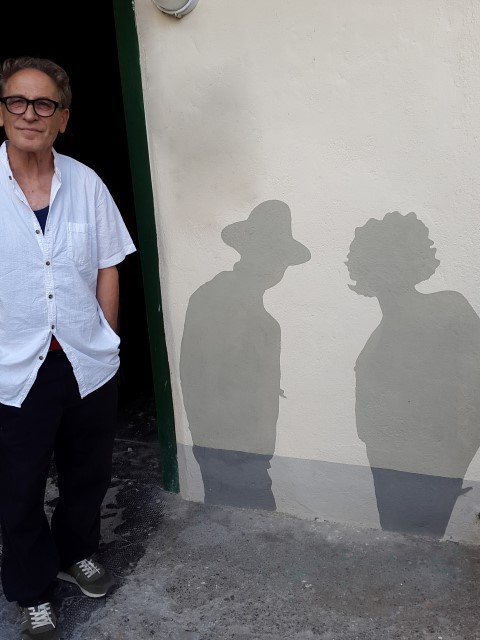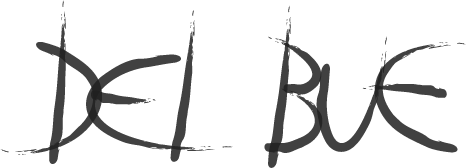 Gianni Del Bue was born at Reggio Emilia on December 27th 1942. At a very young age he learns from his father – a quadraturist and trompe-l’oeil master – about painting techniques. He starts painting for pleasure, particularly attracted by the paintings by Filippo De Pisis and Giorgio De Chirico among modern painters and by Paolo Uccello and Piero della Francesca among the ancient ones. His interest for the latter painter is a constant element in his art career. He has been to Urbino and the environs several times to study the great ancient maestro modern painters appreciate so much.
Gianni Del Bue was born at Reggio Emilia on December 27th 1942. At a very young age he learns from his father – a quadraturist and trompe-l’oeil master – about painting techniques. He starts painting for pleasure, particularly attracted by the paintings by Filippo De Pisis and Giorgio De Chirico among modern painters and by Paolo Uccello and Piero della Francesca among the ancient ones. His interest for the latter painter is a constant element in his art career. He has been to Urbino and the environs several times to study the great ancient maestro modern painters appreciate so much.
In the mid 1960s, after moving to Turin, Del Bue decides to show for the first time two works of his to the city’s Società Promotrice di Belle Arti (Fine Arts Promoting Society); these paintings immediately appeal to Aldo Passoni, the curator of the Museo d’Arte Moderna (Museum of Modern Art) in Turin, who encourages him and invites him to important art exhibitions.
Between 1965 and 1975 Del Bue’s art acquires an abstract framework being influenced by informal art, by pop art, by geometrical abstractionism and by minimalism. He meets Emilio Scanavino at Calice Ligure, Gianni Mandella and Claudio Olivieri in Milan, Filippo Avalle in Brianza, Pino Mantovani in Turin, while the art gallery owner Giancarlo Salzano begins to take care of his works, together with the works by Carol Rama, Gino Gorza and Horiki.
He enjoys the esteem and friendship of two intellectuals from Mantua, Gino Baratta and Francesco Bartoli, who will be fundamental in the development of his artwork, among other things strengthening Del Bue’s link with Mantua, which is continuing thanks to his collaboration with Alberto Bernardelli, bookseller and gallery manager who organized and devised important exhibitions at the Dukes’ Palace and and Te Palace and at his own Einaudi Art Gallery in Mantua. The artist shows two large paintings at “Prospettiva 5” in 1972 in Rome and twelve works at Premio San Fedele in Milan in 1974. He is an official member of the “Nuova Pittura” artistic movement, but, after troubles and second thoughts, he thinks of going back to figurative art.
Between 1975 and 1985 Del Bue creates large paintings the support of which consists mainly of a network of triangular canvasses stitched together and made irregular by holes, mendings and frayings. On this polycentric background the artist paints a large number of images, sometimes overlapping, taken from the art world and from advertisements, in such a way as to point out the mythical and allegorical function of the image. They are labyrinthine paintings showing tales and requiring plenty of time to be made, which have been praised by art critics for their anticipator elements with reference to the fledgling phenomenon of trans-avant-garde, according to Francesco Poli’s opinion, or of postmodern, according to Marco Rosci.
An anthological exhibition organized by Janus at Aosta in 1988 hits on the nail of this expression form and suggests its absolute novelty at a national level. But in that same year Gianni Del Bue’s artistic restlessness leads him to a new expressive transformation.
From Turin he moves to the Langhe, an area in the south-west of Piedmont, and he often escapes to the West Riviera in Liguria, where he is looking for a renaissance marked by a simpler painting register and a deeper relationship with nature and life emotions.
His painting changes, apparently it becomes simpler, taking the shape of a new “magical realism”. The hills of the Langhe suggest and represent the geometrical division on the canvas; reality enters the painting making the use of further graphical contrivances useless. The artist understands that the state of being contemporary of the work, its talking about a present, alive and original time doesn’t depend on the described subject but on this new language.
With this, the artist can focus on the elements of reality which more strike him, inserting here and there strokes of pure invention, lighting the scene as if it were in a cinema studio, and switching on an intimate night light on the several domestic details or landscapes: it is a light which is glittering and irradiating “cathode-ray, tv-like, modern time light” as the critic Marzio Dall’Acqua recently said.
The works by Del Bue have aroused the critical interest of Enrico Crispolti and Giorgio Di Genova since the beginning, and the passionate reading by Janus, his exegete, and they have also interested the literary world. The first review of his works was by Ermanno Cavazzoni in 1969, after that Seabastiano Vassalli will devote to him three poems, Piero Meldini will write two short stories, and also Francesco Biamonti will invent an imaginary interview with the painter. He is as familiar with the latter, thanks to their meetings in Liguria, as he is familiar with his friend from Mantua Frediano Sessi, the writer, who introduced him several times in catalogues.
In 2006, on the occasion of the celebrations for the 500th anniversary of Andrea Mantegna’s birth, Gianni Del Bue organized the exhibition “Le Oche del Mantegna” (Mantegna’s Geese), with catalogue by Libreria Galleria Einaudi, texts by Marco Rosci and Gianfranco Ferlisi.
Gianni Del Bue is also keen on music, from classical to jazz. In 1970 already his painting meets Johnny Griffin’s jazz at the Swing Club in Turin, and even recently his painting has aroused the interest and the cultural exchange with some contemporary musicians such as Stefano Gueresi and Giovanni Bietti.
In the last years the contributions by Carlo Sisi have been particularly precise from the point of view of his style analysis: he even hosted a Del Bue exhibition at the Marino Marini Museum in Florence. So have the ones by Marzio Dall’Acqua, curator of the anthological exhibition at the Abbazia Polironiana at San Benedetto Po.
The artist lives and works in the commune of Farigliano in the Langhe.
